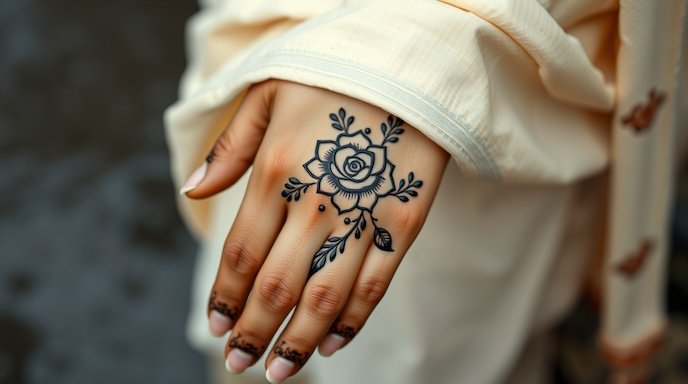Table of Contents
Introduction
Arabic Rose Mehndi Designs have become a favorite among young women in India and the Middle East. There’s something irresistible about the way bold Arabic lines meet the soft curves of a rose. I first saw these designs several years ago when I was at a college festival. What I loved was how the large, rose motif, combined with flowing vines and generous negative space, made each design look both modern and traditional.
In this guide, you’ll learn what sets Arabic Rose Mehndi apart from other styles. I’ll share the key characteristics, step-by-step techniques, and practical tips I’ve gathered over years of practice. Whether you’re preparing for a wedding, Eid, or Diwali celebration, or simply love experimenting with henna, this article offers insights and ideas to create a unique design that speaks to both heritage and contemporary style.
If you’re interested in other mehndi options then check out our articles on Arabic Front Hand Mehndi Designs and Arabic Peacock Mehndi Designs. For a high level overview see our article on Arabic Mehndi Designs.

Background & Key Characteristics
Arabic Rose Mehndi Designs stand out because of their simplicity and elegance. Unlike the densely packed details of traditional Indian mehndi, this style uses large, bold outlines along with a prominent rose motif. Key features include:
- Negative Space: The design intentionally leaves areas of skin untouched, creating a striking contrast that emphasizes the large floral elements.
- Bold Outlines: Arabic patterns use thick, flowing lines that form the structure of the design. When the rose is added, its outline is distinct and eye-catching.
- Free-Form Layout: Instead of mirroring patterns on both hands, the designs tend to be asymmetrical. This free-flowing style gives each piece a unique feel.
- Fusion of Elements: The integration of a single, dominant rose with supportive vines and smaller leaves creates balance and elegance.
These characteristics not only make the design easier and faster to apply but also lend it a modern look that resonates with a young, style-conscious audience.
Design Elements & Techniques
Crafting effective Arabic Rose Mehndi Designs means combining simplicity with thoughtful artistry. Here are some essential techniques:
- Focal Point – The Rose: Begin with the rose as the centerpiece. Often drawn with a bold outline, the rose’s petals are layered to mimic natural bloom. Start with a central spiral or curved line and build outward with larger, overlapping petals.
- Flowing Vines & Leaves: Arabic designs are known for their elegant, sweeping lines. Extend a vine from the rose, curving gracefully across the hand. Add leaves and smaller buds along the vine to create continuity. The trick is to let these elements complement the rose rather than overwhelm it.
- Use of Negative Space: Unlike intricate Indian mehndi, Arabic designs leave deliberate gaps. This negative space not only enhances the boldness of the outlines but also gives the design a modern, uncluttered look. The open spaces provide balance and draw attention to the major motifs.
- Varying Line Weight: For visual impact, use a thicker line for the main rose outline and finer lines for details like petal textures or vine highlights. Adjust the pressure on your henna cone to create this contrast. Practice will help you maintain consistency.
- Symmetry Through Balance: While perfect symmetry isn’t the goal, a balanced distribution of elements is crucial. If you place a large rose on one part of the hand, counterbalance it with additional elements on the opposite side. This doesn’t mean mirroring, but rather achieving a natural, flowing balance.
- Practical Tips:
- Rest your elbow on a firm surface to steady your hand.
- Practice the basic shapes on paper before transferring the design to your skin.
- Keep your henna paste at the right consistency for both bold outlines and fine details.
With these techniques, even beginners can start experimenting with Arabic Rose Mehndi, allowing each design to develop its own personality while remaining rooted in tradition.
Below are several Arabic Rose Mehndi designs from our gallery. More designs are included throughout this article for you. Click on the images to expand and print.
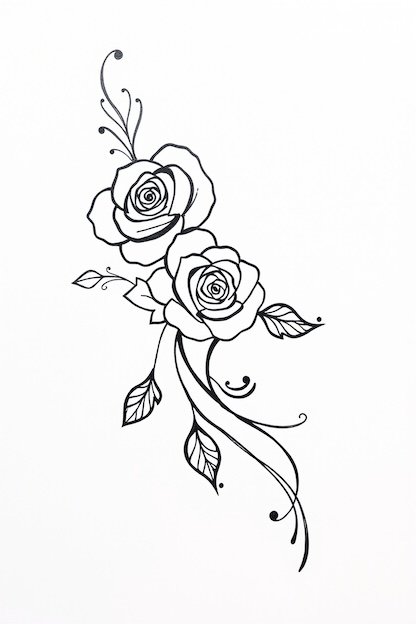

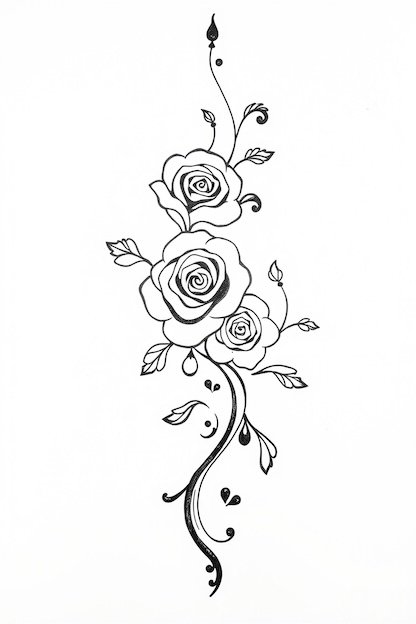
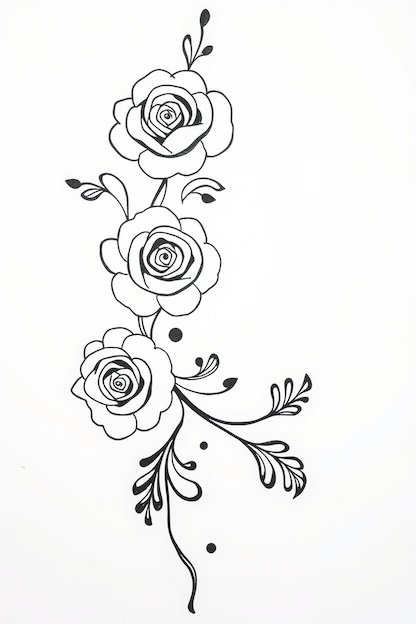
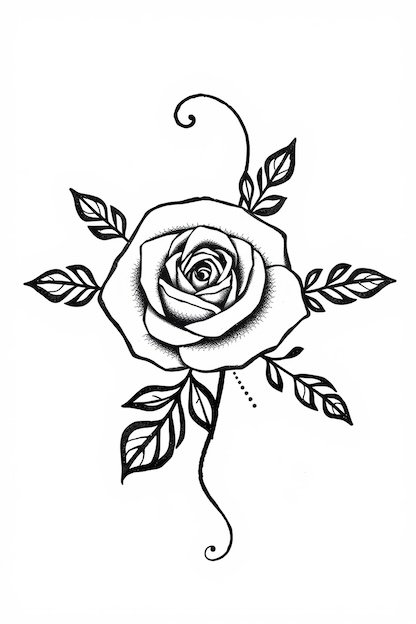
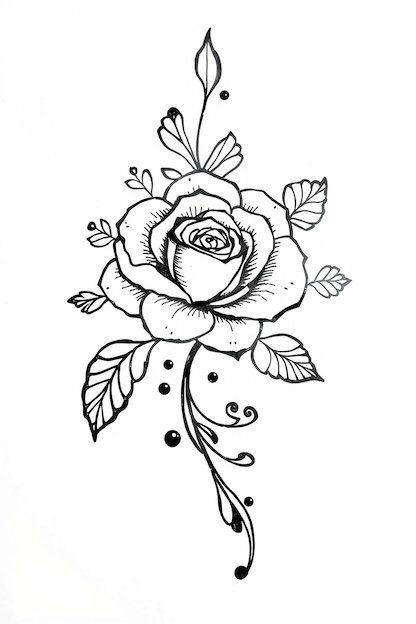
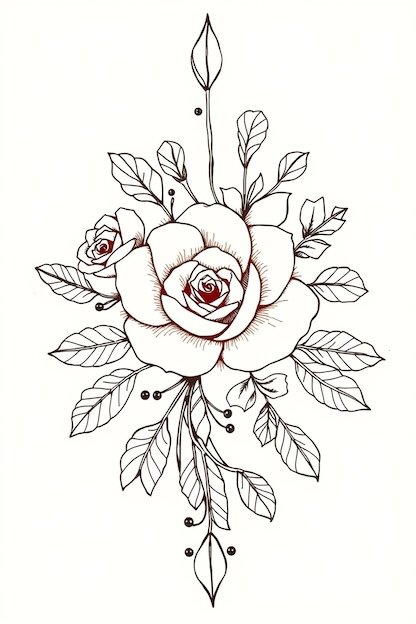

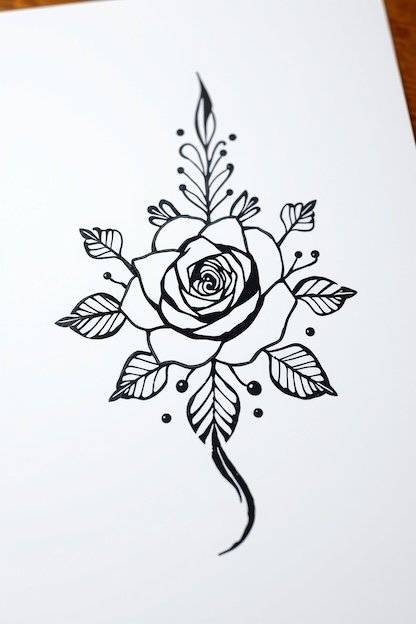

Step-by-Step Tutorial
Here’s a beginner-friendly tutorial to create your very own Arabic Rose Mehndi Design:
1. Prepare Your Materials and Skin
- Materials Needed:
- A fresh henna cone (natural henna paste ensures a deep, rich stain)
- Tissues for cleaning mistakes
- A small bowl for mixing a lemon-sugar solution
- A design reference or a simple sketch
- Skin Preparation: Wash your hands thoroughly and dry them completely. Avoid applying any oils or lotions, as these can interfere with henna adhesion.
2. Sketch the Focal Rose
- Start with the Center: Lightly sketch the center of your rose. A simple spiral or curved comma shape works well.
- Build Outward: Draw a series of overlapping petals around the center. Keep the lines bold. This is the main element of your design.
- Refine the Outline: Go over your sketch to ensure the outline is clean and confident. This bold rose will serve as the focal point.
3. Add Flowing Vines and Leaves
- Extend the Vine: From one side of the rose, draw a smooth, curved line that will act as the vine. Let it naturally wind toward your fingers or wrist.
- Incorporate Leaves: Along the vine, add a few leaves or smaller floral buds. Use thinner lines for these details.
- Balance the Design: Ensure that the vine and leaves create a natural flow. If one side looks too sparse, add an extra leaf or a small accent to maintain balance.
4. Fill in with Accents and Negative Space
- Accents: To complete your design, add small dots, tiny spirals, or micro-motifs in the gaps. These details should enhance the overall look without overwhelming it.
- Maintain Negative Space: Step back frequently to ensure you’re leaving enough open skin. The uncolored areas are as important as the hennaed parts, giving your design its signature airy feel.
5. Final Touches and Aftercare
- Review and Adjust: Once the design is complete, inspect it for any areas that may need extra detail or correction. Use a tissue to gently clean any smudges while the paste is still wet.
- Seal the Design: After the henna has dried for 10-15 minutes, lightly dab the design with your prepared lemon-sugar solution. This helps the paste stay in place and improves the color payoff.
- Allow to Dry Fully: Let the paste remain on your skin for at least 2–3 hours. For a deeper stain, many artists leave it on overnight. Avoid water contact during this time.
- Remove Gently: Once dry, carefully scrape off the paste using a blunt edge or tissue. Do not wash the area immediately. Allow the stain to oxidize and darken over the next 24–48 hours.
By following these steps, you’ll create a beautiful Arabic Rose Mehndi design that marries the boldness of Arabic patterns with the softness of a rose.
Below are several Arabic Rose Mehndi designs from our gallery. More designs are included throughout this article for you. Click on the images to expand and print.
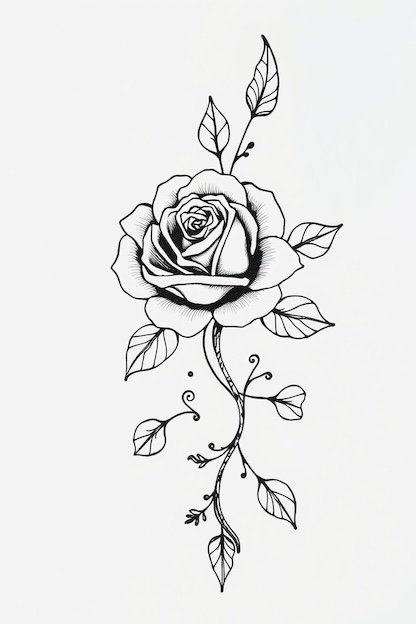
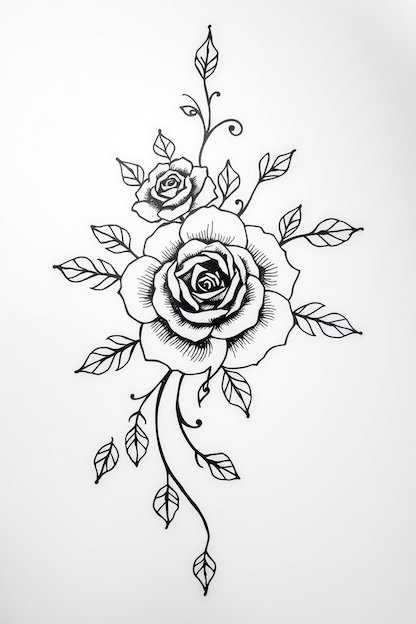
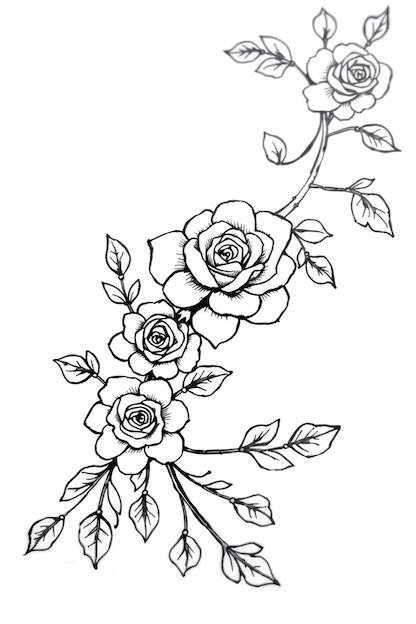
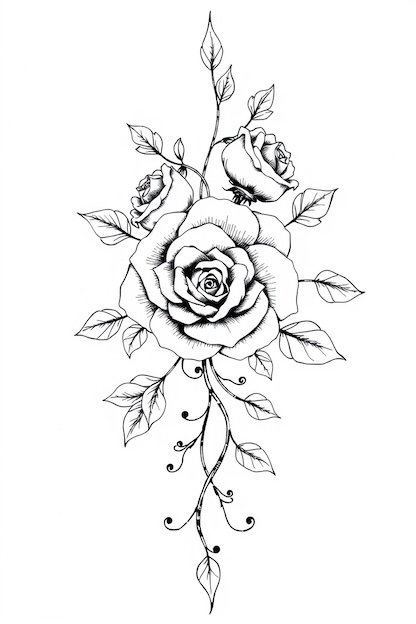
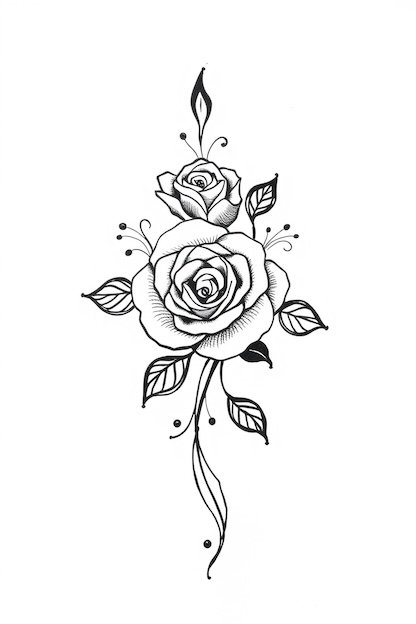

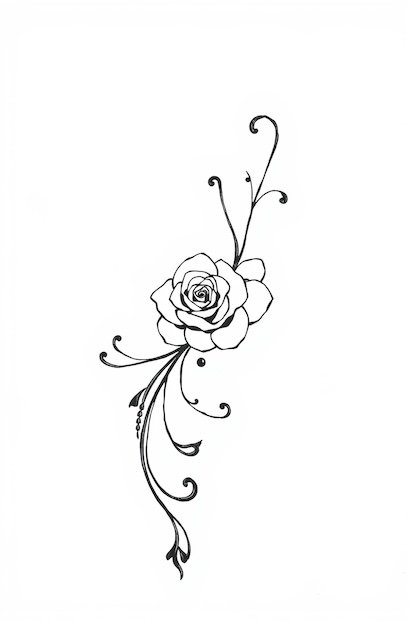
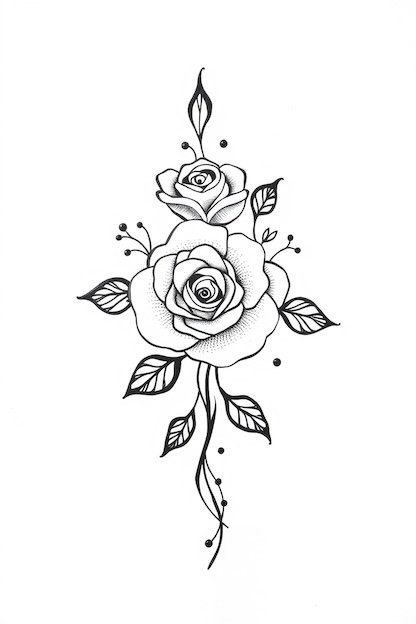
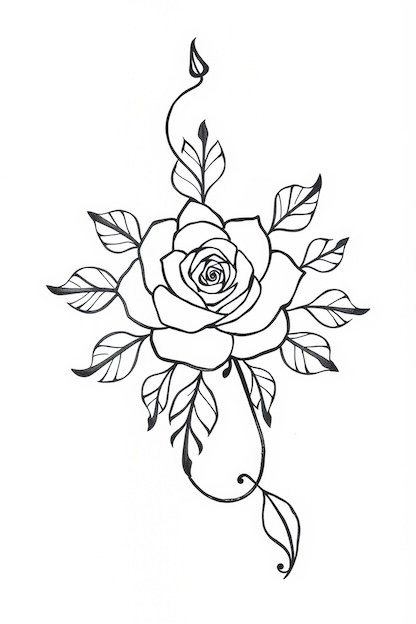

Variations and Popular Trends
While the classic design remains timeless, modern interpretations of Arabic Rose Mehndi are evolving. Here are some popular trends:
| Trend | Description |
|---|---|
| Minimalist Designs | Many young women are opting for a single, bold rose with minimal additional details. This minimalist approach is perfect for everyday wear or low-key celebrations, letting the natural beauty of the rose shine through. |
| Fusion Styles | A rising trend is the fusion of Arabic and Indian elements. For instance, while keeping the large rose as the centerpiece, artists may fill in some gaps with finer, Indian-style paisley or mandala details. This blend creates a unique design that respects tradition while embracing modern trends. |
| Personalization | Custom touches such as initials, dates, or meaningful symbols are becoming popular. For example, a small heart or a loved one’s initial can be subtly incorporated into the design, making it uniquely personal. |
| Metallic and Glitter Accents | For festive occasions, some artists add a hint of metallic glitter or use white henna to outline parts of the design. These accents catch the light beautifully, perfect for weddings or special events. |
| Bold Gulf-Inspired Variations | Influenced by Gulf trends, some designs feature multiple interconnected rose motifs with thick, swirling vines. These adaptations are especially popular on the fingers and wrist, creating a statement look that is both modern and culturally resonant. |
These trends allow for endless creativity while maintaining the signature elements of Arabic Rose Mehndi—bold outlines, a dominant rose, and the clever use of negative space.
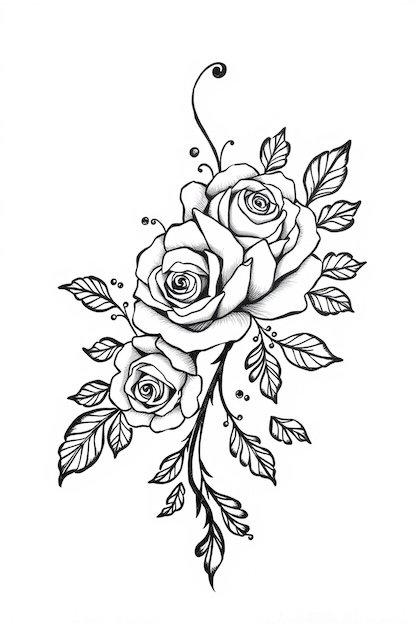



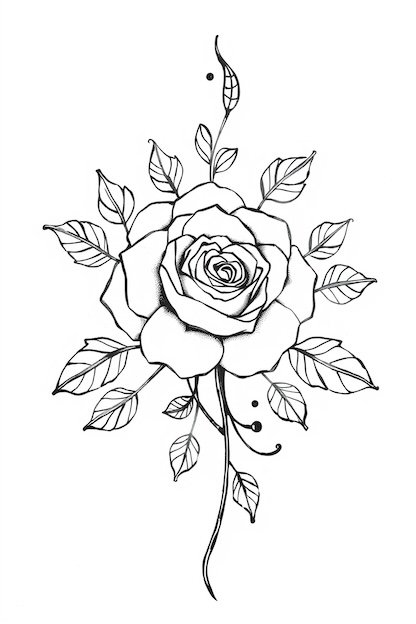
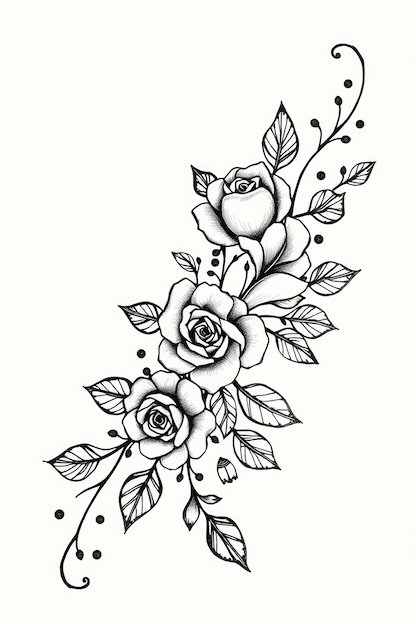
Cultural Inspirations & Symbolism
The rose in henna holds deep cultural meaning in both Arabic and Indian traditions. In Arabic culture, the rose is a symbol of passion, beauty, and love. Its blooming represents the unfolding of new beginnings, which is why it is often chosen for weddings and special celebrations. Middle Eastern art frequently features roses, and the use of this motif in henna creates an immediate association with romance and elegance.
In Indian culture, the rose (or gulab) is also a beloved symbol of love and beauty. Roses are integral to festive décor, bridal adornments, and even religious ceremonies. When incorporated into a henna design, the rose does more than add aesthetic appeal, it infuses the artwork with meaning, celebrating love, joy, and prosperity. This dual cultural significance makes Arabic Rose Mehndi a truly universal style, resonating with traditions from both regions.
Many young women appreciate this blend of cultural heritage and modern flair. The rose, with its timeless beauty, serves as a reminder that art can be both personal and deeply rooted in tradition. Whether it’s for a wedding, Eid, or a casual festive gathering, the rose in Arabic Mehndi symbolizes the hope and beauty that blossom with every new beginning.

Creative Customization & Future Trends
As mehndi designs continue to evolve, artists are finding creative ways to customize Arabic Rose Mehndi designs. Here are a few ideas for adding your personal twist:
- Integrate Personal Symbols: Beyond initials, consider adding small motifs that carry personal meaning—such as stars, moons, or even culturally specific symbols. These subtle details can transform your design into a storytelling canvas.
- Experiment with Color Accents: While natural henna produces a classic brownish-red stain, some modern artists experiment with safe, temporary color accents. Using natural glitter or even pairing henna with light metallic elements can give your design an eye-catching twist for special events.
- Adapt the Scale: Don’t be afraid to play with the size of the rose or the length of the vines. For instance, a larger rose can be a dramatic centerpiece on the palm, while a series of smaller roses arranged along the fingers creates a delicate chain effect.
- Embrace Minimalism or Maximalism: Some prefer a minimalist single-rose design, while others enjoy adding layers of detail. The beauty of Arabic Rose Mehndi lies in its flexibility. Look to social media and cultural festivals for inspiration, and don’t be afraid to mix traditional elements with contemporary design cues.
- Future Trends: With the rise of fusion art, we might see even more integration between Arabic, Indian, and even Western tattoo styles. Keep an eye on emerging techniques such as finer applicator cones, innovative henna paste recipes, or the use of digital design aids that can help pre-visualize your pattern before application.
These customization ideas encourage you to make the design your own. Henna is as much about personal expression as it is about tradition, so use these suggestions as a launching point for your own creative journey.
FAQs and Common Misconceptions
Q: How does Arabic Rose Mehndi differ from traditional Indian mehndi?
A: Arabic Rose Mehndi emphasizes a single, bold rose motif with generous negative space and flowing vines, unlike the densely detailed and symmetrical designs common in Indian mehndi.
Q: What does the rose symbolize?
A: The rose represents love, beauty, and new beginnings. It holds deep cultural meaning in both Arabic and Indian traditions, making it a popular choice for weddings and festive occasions.
Q: Can beginners try this style?
A: Absolutely. Arabic Rose designs are forgiving and ideal for beginners due to their simplicity and reliance on bold, clear lines rather than intricate details.
Q: Is black henna necessary for darker outlines?
A: No. Always use natural henna for safety. Black henna is often chemically enhanced and can be harmful. Natural henna, when applied correctly, gives you a beautifully dark, rich stain.
Q: How long will the design last?
A: With proper aftercare, expect your design to last about one to two weeks. Properly sealed henna will develop a deep color over 24–48 hours before gradually fading.
Conclusion
Arabic Rose Mehndi Designs bring together the strength of bold Arabic patterns with the gentle beauty of a blooming rose. Whether you’re adorning your hand for a wedding, Eid, Diwali, or simply as an expression of personal style, these designs offer a modern yet traditional take on henna art. With careful application, creative customization, and the right aftercare, you can create a timeless design that not only looks stunning but also carries deep cultural symbolism.
I hope this guide inspires you to experiment and make the design uniquely yours. Enjoy the process, and let your creativity blossom as beautifully as the rose in your Arabic Rose Mehndi!

